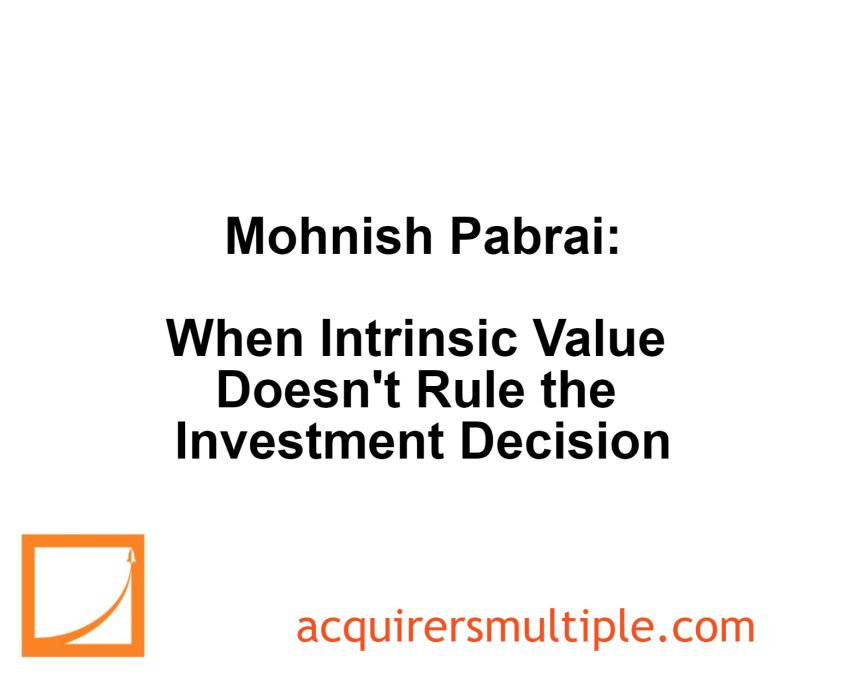In this presentation to Boston College and Harvard Business School, Mohnish Pabrai explains why as an investor you don’t need to accurately calculate intrinsic value. The primary question to ask about some businesses is whether they are continually improving. If the business is better today compared to one, two, or five years ago, and its valuation is reasonable, then it’s a candidate for long-term investment. Here’s an excerpt from the presentation:
Pabrai: When we look at a business like Amazon, and if I were an investor in Amazon, the only question I would ask myself is the business getting better?
Is the business better today than it was a year ago, two years ago, or five years ago?
And is the valuation within some reasonable range of possibly giving me a good outcome long term.
So when I look at a business like Amazon today and I look at their market cap and whatever I don’t consider it egregious. I don’t consider the valuation egregious based on the different pieces that are there.
And so the way I would look at Amazon is it’s buy and hold forever.
And the time to rethink Amazon is not based on valuation unless it goes really crazy, Amazon value goes to 10 trillion or 20 trillion or something and all that go off tomorrow. If you go there over time that might be okay.
But the question is… one is if the valuation goes extreme, or the second is, the business is in decline.
So you reach a conclusion that the business is worse than it was yesterday, or the day, or the five years ago. So if the business is in decline or the valuation is very extreme those will be the two conditions under which if I was an owner of Amazon I would look to sell it.
But I would not try to waste a lot of brain cells trying to figure out what the intrinsic value of Amazon.
You can watch the entire discussion here:
For all the latest news and podcasts, join our free newsletter here.
Don’t forget to check out our FREE Large Cap 1000 – Stock Screener, here at The Acquirer’s Multiple:



